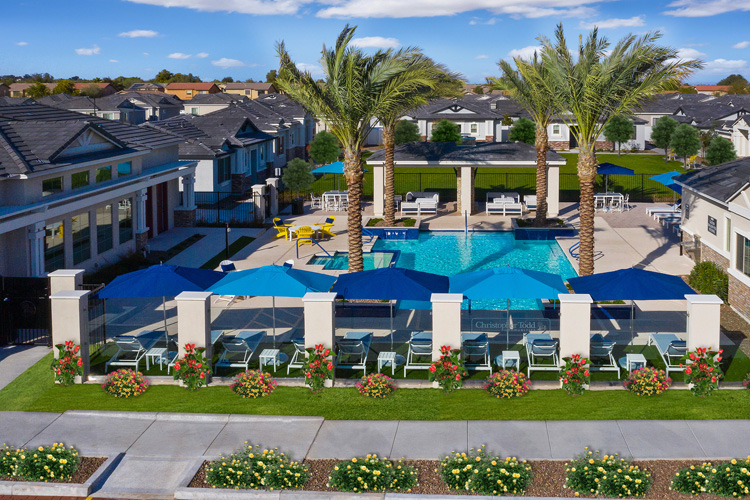Build-to-rent housing was a hot topic of conversation at September’s Valley Partnership breakfast. Planned from inception to be rental homes, these units typically are grouped together in one area, similar to a master-planned community, and all of the residents are renters. Though the term “build-for-rent” can include townhomes and duplexes, the event’s panel of four experts focused primarily on single-family detached houses.
“Five to 10% of new build homes are now build-for-rent,” says Heather Personne, managing principal at Evolve Ventures. “Phoenix is the third largest market by unit count for single family and build-to-rent housing, and it has the lowest vacancy rate since 1984 because of persistent demand and our continued under supply.”
Build-for-rent communities have become a popular option for families who aren’t ready for or don’t want the responsibilities of homeownership but desire more space than what an apartment affords.
“It’s not a myth that people don’t necessarily want to own a home anymore. They want to be flexible, and they want to rent something before they decide if and where they want to live in a particular city. Build-for-rent is definitely filling a niche,” notes Keaton Merrell, managing director at Walker & Dunlop.
READ ALSO: Are short-term rentals investors ruining Arizona housing market?
Chris Grogan, partner at El Dorado Holdings, agrees that flexibility is an attractive feature. “These units are not necessarily for lower income renters. We’re seeing people who are nurses and teachers. Build-for-rent is filling a bit of the workforce housing need, but it’s not Section 8. People want a little more luxury.”
Surveys of Mark-Taylor Companies’ rental residents find build-to-rent occupants to be the most satisfied throughout the organization’s portfolio of properties.
“People living in this product are the happiest of all our residents,” comments Dustin Lacey, vice president of brand and marketing at Mark-Taylor Companies. “Our residents are folks who want to set down roots, so small things like doggie doors really stand out.”
Tim Brislin, vice president at Harvard Investments, says that his company sees build-for-rent communities like a mini master plan. “We want the same elements of connectivity and amenities that you find in a complete master plan. Little backyards and units that face each other make it feel like a neighborhood.”
Lacey continues, “We term our demographic ‘the modern millennial’. Residents average about 38 years old with double the percentage of pet owners. They aren’t all families, but the household sizes are larger on average, and household incomes are in the $90,000-$92,000 range. In terms of rent-to-income ratio, it’s probably the highest ratio relative to our product types, which means they’re probably a higher exposure risk should economic conditions change.”
Despite that caveat, the panel members stress that build-to-rent communities are reliable in the long term. Merrell points out that the average build-to-rent tenant stays three times longer than in a multifamily unit.
“As a master-planned community developer, we wanted something that creates sustainable cash flow that can be counted on in good times and bad,” explains Brislin, who goes on to mention the specter of the Great Recession, which still looms over the industry.
Grogan notes that some people are renters by choice, but that’s not always the case. “We all remember a time where we one in four homes were foreclosed and short sold. If that was your house, you face seven years until you can get back into the market and get a loan. Build-to-rent was born because people lost their homes and didn’t want to go to apartments,” says Grogan. “But this is a real product class that’s not detrimental to anybody else’s project.”
Merrell concludes that build-to-rent houses are here to stay. He says, “There’ll be 80,000 units started this year, 120,000 started in 2022, and 700,000 over the next five years nationwide.”




